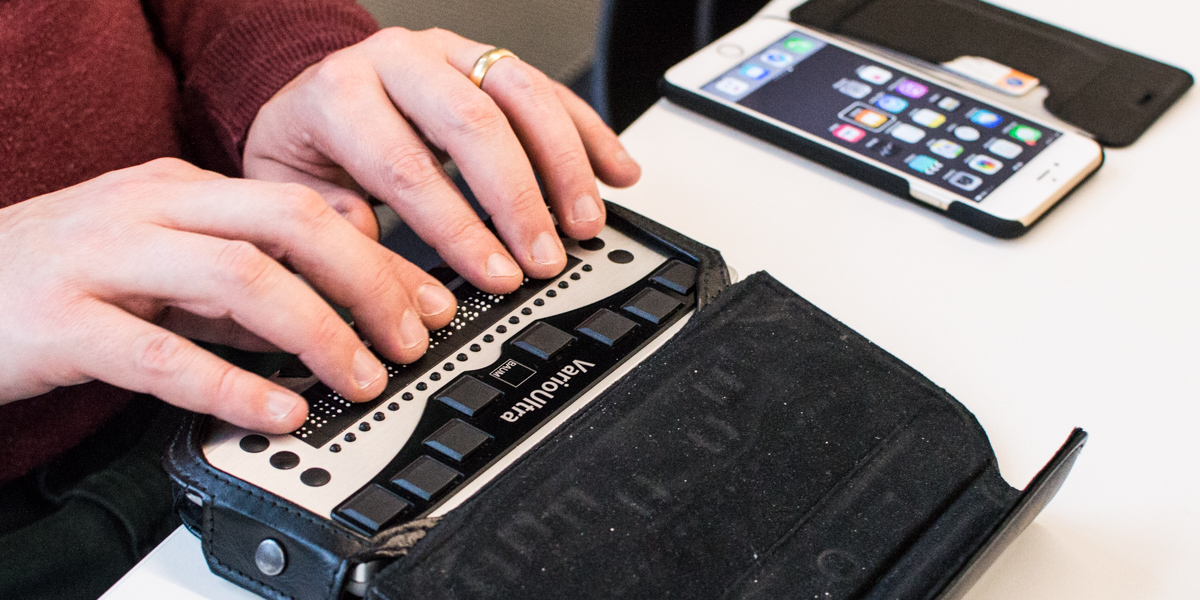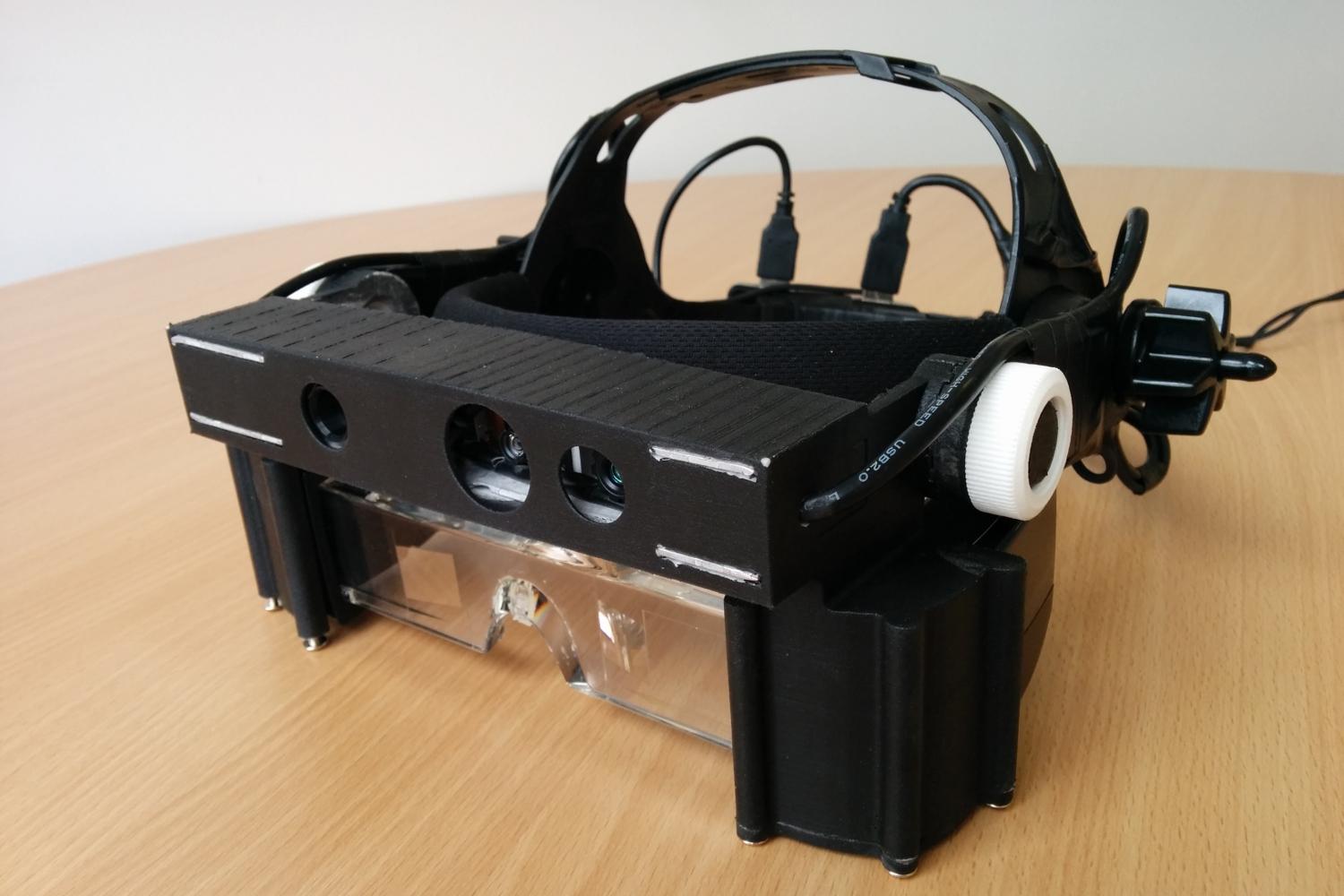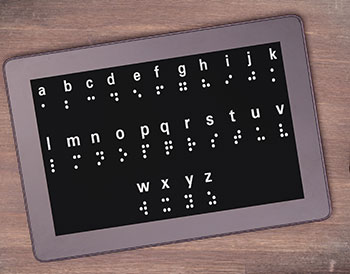Mobility Aids for Visually Impaired Users: Navigating the World with Confidence
Wiki Article
Empowering Self-reliance With Assistive Technology for the Blind
The integration of assistive innovation right into the lives of individuals with visual problems stands for a substantial improvement in advertising self-reliance and self-sufficiency. From innovative screen viewers to sophisticated wise walking sticks, these tools not just boost daily navigation and communication but additionally empower individuals to engage meaningfully in different facets of life. As we check out the myriad advantages and real-world applications of these modern technologies, it comes to be critical to analyze the underlying factors that add to their effectiveness and the possibility for future developments in this crucial field.Introduction of Assistive Modern Technology

The advancement of assistive technology is based in concepts of inclusivity and empowerment. Innovations in software application, equipment, and sensory enhancements give users with choices tailored to their certain needs. From screen readers that convert text to speech, to responsive devices that communicate information via touch, these devices change the means people engage with their surroundings.
Along with useful applications, assistive modern technology fosters better social incorporation and participation in various fields, consisting of education and learning and work (Smart glasses for the visually impaired). As study and advancement remain to develop, the potential for assistive modern technology to even more enhance the lives of aesthetically impaired individuals continues to be promising, paving the way for a much more fair culture where everyone can prosper
Sorts Of Assistive Tools
A variety of assistive devices have emerged to support people with aesthetic disabilities, each developed to satisfy details needs and enhance daily performance. These devices range from low-tech remedies to state-of-the-art technologies, supplying varied alternatives for customers.Low-tech tools include magnifiers and large-print materials that aid in reading and writing. Braille tools, such as Braille slates and stylus pens, enable responsive analysis and interaction. Orientation and movement help, like white walking sticks, assist users browse their environment safely.
On the higher end of the spectrum, electronic magnification systems and screen visitors offer considerable support. Digital magnifiers enable individuals to enlarge message and images on screens, while screen readers transform digital material right into manufactured speech, helping with access to information on computers and smartphones.
Smartphone applications also play an important role, offering features like text acknowledgment and navigating aid. Wearable innovation, such as smart glasses furnished with increased fact, is becoming an appealing device to enhance situational recognition.
Benefits of Assistive Technology
The integration of assistive technology substantially enhances the high quality of life for people with visual problems. These modern technologies encourage individuals by promoting freedom, allowing them to navigate their settings better and perform daily jobs with greater convenience. For example, screen readers and magnification software program enable people to access digital information, cultivating specialist and instructional opportunities that might have formerly been out of reach.Additionally, assistive tools such as smart walking canes and general practitioners applications supply real-time navigating aid, enhancing wheelchair and safety. This increased freedom not only improves self-esteem but additionally encourages social engagement, permitting users to get involved more fully in their communities.
Assistive innovation additionally promotes communication, assisting customers attach with others via voice recognition and text-to-speech applications. This capacity is vital for maintaining partnerships and accessing important details.
Furthermore, the modification choices offered with numerous assistive technologies ensure that customers can tailor devices to their particular demands, additionally boosting use and performance. On the whole, the advantages of assistive technology for individuals with visual problems are extensive, promoting a much more comprehensive society where every person can seek their goals and objectives.
Instance Research Studies and Success Stories
Highlighting the transformative impact of assistive technology, many situation researches illustrate how individuals computer glasses blue light with aesthetic disabilities have effectively incorporated these devices into their lives. One engaging example entails an university student who utilized screen reading software to browse on-line sources and academic products properly. This technology not only facilitated her education and learning but additionally enhanced her self-confidence in participating in conversations and team jobs.Another situation study features an expert who employs a smart device application designed for navigating and item recognition. By utilizing this app, he has restored autonomy in both his personal and job environments, enabling him to commute individually and engage with associates more successfully.
In addition, a senior citizen shared her experience with braille e-readers, which enabled her to access a large array of literary works and stay gotten in touch with her area with publication clubs.
These success tales underscore the vital function of assistive technology in fostering freedom, boosting lifestyle, and promoting social integration for people with aesthetic impairments (Speech-to-text devices for low vision). By welcoming these innovative devices, users can overcome difficulties and confiscate opportunities that contribute to their expert and personal satisfaction

Future Patterns in Assistive Modern Technology
Technology in assistive modern technology is positioned to redefine the landscape of support for people with visual problems. Emerging patterns stress the integration of expert system (AI) and artificial intelligence, which enhance the capability of gadgets that assist additional reading with navigation and info availability. For circumstances, AI-driven applications are currently with the ability of interpreting aesthetic data in real-time, making it possible for individuals to engage with their environment a lot more separately.Additionally, the development of wearable innovation is advancing rapidly. Smart glasses equipped with increased fact (AR) can provide audio descriptions of environments, transforming how customers engage with public spaces. These gadgets not just promote freedom however additionally foster social addition.
In Addition, the Net of Things (IoT) is making homes smarter, enabling smooth connectivity in between assistive devices and daily home appliances. This connection encourages customers by making it possible for computerized responses and voice-activated controls customized to private requirements.
Verdict
In conclusion, assistive innovation plays a critical function in empowering people with aesthetic impairments by enhancing their self-reliance and engagement with have a peek here their surroundings. The varied variety of applications and gadgets available not only assists in navigation and interaction however also promotes social integration and chances for expert and personal development. As developments proceed in this field, the potential for improving the lifestyle for those with aesthetic impairments will certainly increase, fostering greater freedom and empowerment.
Report this wiki page